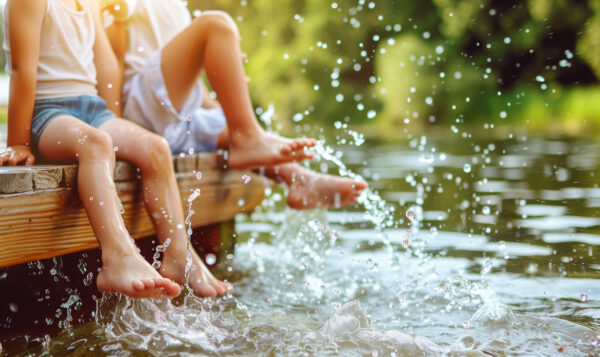
Healthier Lawns Mean A Healthier Chesapeake Bay
Protecting the Chesapeake Bay watershed has always been a concern of ours and one of the focuses of our industry. Nutrients like nitrogen and phosphorus wash into our waterways via stormwater runoff and contribute greatly to poor water quality. All of this nutrient runoff works its way through ponds, lakes, streams, and rivers within the watershed and ultimately flows into the the Chesapeake Bay. We often remind everyone to reduce fertilization of your turf and ornamentals to prevent excess nitrogen and phosphorous pollution from getting into the these streams and rivers that feed into the Chesapeake Bay.
The Environmental Protection Agency’s Chesapeake Bay Program pulled together a panel of experts to look at the impacts that lawns (turf grass), in general, have on the Bay. The report concluded that although we do want to minimize excessive and wasteful fertilizer practices, responsible fertilization of turf actually improves turf quality and density and ultimately leads to an improvement in the water quality in the Chesapeake Bay watershed. The EPA is now suggesting that a healthy, properly fertilized lawn is actually good for water quality. The research shows that “…a dense vegetative cover [of turfgrass] helps to reduce surface runoff, which can be responsible for significant nutrient export from the lawn, regardless of whether it is fertilized or not. Dense cover has been shown to reduce surface runoff volumes in a wide range of geographic settings and soil conditions.”
EPA Report Va TurfgrassThere is a great article in the Virginia Turf Journal that goes into great detail about the EPA’s lawn research and recommendations.
Some of their many recommendations to homeowners:
- Develop an effective nutrient-management lawn care plan for their property, based on a soil test and discussion with their certified applicator
- Maintain a dense vegetative cover of turfgrass to reduce runoff, prevent erosion and retain nutrients
- Retain clippings and mulched leaves and keep them out of streets and water drain
- Do not apply fertilizer within 15 to 20 feet of a water body (depending on applicable state regulations) and manage a proper vegetative buffer around the lake, pond or stream.
The Virginia Turfgrass Council is a member-based association serving the turfgrass industry for 53 years. www.virginiaturf.org.









